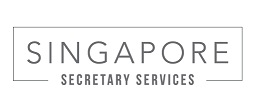It is highly recommended to initiate early preparations to seamlessly transition to the new GST rate of 9% effective from January 1, 2024. This involves potential adjustments to your point-of-sale, invoicing, accounting systems, and other operational aspects, including updating price displays to reflect the revised rate.
The Budget
In the Budget announcement of 2022, the Minister for Finance disclosed the progression of the GST rate:
(i) From 7% to 8% starting from January 1, 2023.
(ii) From 8% to 9% commencing January 1, 2024.
The increased revenue from GST will contribute towards supporting healthcare expenditures and addressing the needs of seniors.
Applying the GST Rate
Normally, GST should be applied at the prevailing rate during the supply transaction. Therefore:
- Invoices or payments for supplies in 2023 should carry GST at 8%.
- Invoices and payments for supplies issued or received on or after January 1, 2024, should incorporate GST at 9%, unless the option to charge at 8% under transitional rules has been elected, meeting specific conditions.
Penalties may be incurred for failing to correctly account for GST at the appropriate rate. Adequate preparation for the GST rate change will help mitigate such repercussions on business and compliance expenses.
Charging GST at 9% on invoices or payments issued or received before January 1, 2024, is not permissible. A checklist for preparing for the 2024 GST rate change guides the system and process modifications required to implement the new rate.
Checklist for GST rate change preparation
Have I?
- Updated my accounting and invoicing system to incorporate the new GST rate
- Updated my cash register and receipting system to incorporate the new GST rate for point-of-sales billing
- Complied with the price display requirements specified in the e-Tax Guide: 2024 GST Rate Change: A Guide for GST-registered Businesses
- Trained my staff on the transitional rules for rate change and applied the correct GST rate for sales transactions and reverse charge supplies spanning the date of rate change
- Reviewed my contracts/agreements for the GST rate to be charged or borne by each party
- Informed my customers of the GST increase (For example, you may wish to state in your advertisements, websites and
brochures that GST would be charged at the rate prevailing at the time of supply) - Considered applying for the Major Exporter Scheme if my business deals mainly with imports and exports. (Please refer to the e-tax guide “GST: Major Exporter Scheme” for more details)
Timely adjustments should be made to accommodate the GST rate change, including training staff on transitional rules to correctly apply the GST rate across supplies affected by the rate alteration.
Price Display
All publicly displayed prices, including price tags, lists, advertisements, and websites, must include GST. However, hotels and food & beverage establishments imposing service charges are exempt from displaying GST-inclusive prices for items subject to service charges. They must prominently inform customers that prices are subject to both GST and service charges.
For more information on price display guidelines, refer to the document on Displaying and Quoting Prices.
With the GST rate increasing to 9% from 8%, all price displays effective January 1, 2024, must include GST at 9%. In cases where immediate alteration is not feasible, businesses may display both 8% and 9% inclusive prices.
Communicating Price/Fee Increases
Ahead of the GST rate change, businesses should transparently communicate reasons for any price increases to consumers, avoiding attributing price hikes solely to the GST increase. The Committee Against Profiteering (CAP) scrutinises unjustified price increases using the GST as a pretext and investigates reported cases.
Errors to Avoid
To prevent errors associated with the GST rate change:
- Ensure correct GST rates are applied based on the transaction date.
- Update all sales channels to reflect the revised GST rate.
- Verify that the correct GST rate is reflected on invoices and receipts.
Support for System Modifications
Businesses requiring adjustments to their systems can seek support from vendors. Additionally, funding support is available for adopting pre-approved solutions via the Productivity Solutions Grant, facilitating compliance with IRAS’ requirements and easing tax obligations. Further details can be found on the GoBusiness webpage.






Leave A Comment